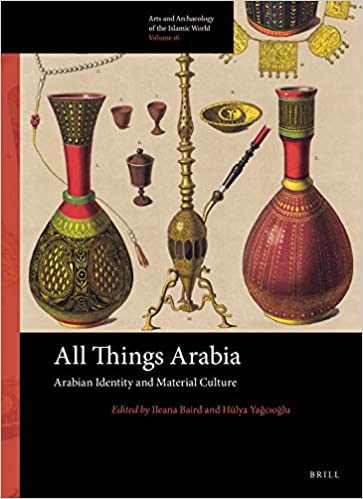
All Things Arabia: Arabian Identity and Material Culture
Tom Verde
Ileana Baird and Hülya Yağcıoğlu, eds.
2020, Brill Publishing, 978-9-00443-591-9, $179 hb
Material culture, the various manufactured objects representative of a regional population, speaks volumes about past and present. Outside observers, such as the famed, mid-20th-century traveler Wilfred Thesiger, concluded that the peoples of the Arabian Peninsula were largely devoid of any such significant, cultural-defining objects. Others, with Orientalist envy, looked upon the region as the source of opulent treasures. This collection of scholarly essays rejects these narrow assessments by exploring the Arabian Peninsula’s “rich material culture” that includes fine metalwork, wood-carving, calligraphy (“a unique form of traditional Islamic art associated with the Holy Qurʾan,”) and traditional Bedouin crafts of weaving, pottery, leatherwork and more). Some, such as the kuffiya, the traditional Levantine head covering, “denote an Arab identity” whether worn by princes or the average citizen. And despite the march of modern economies, crafts such as al-sadu, colorful weaving used for tents and other furnishings, remain an enduring symbol of the region’s nomadic roots.
You may also be interested in...

New Perspective Offered in The Court of the Caliphate of al-Andalus — Our Book Review
Author Eduardo Manzano Moreno gives life to a court scribe’s observations of Córdoba to offer a rarely explored view of the era.png?cx=0.44&cy=0.65&cw=382&ch=487.6595744680851)
Zeina Abirached’s Art Uncovers Urgency of Wisdom in Gibran’s The Prophet
Kahlil Gibran’s 1923 classic is given new life, as Abirached’s graphic novel blends Lebanese artistry with the late author’s timeless wisdom.